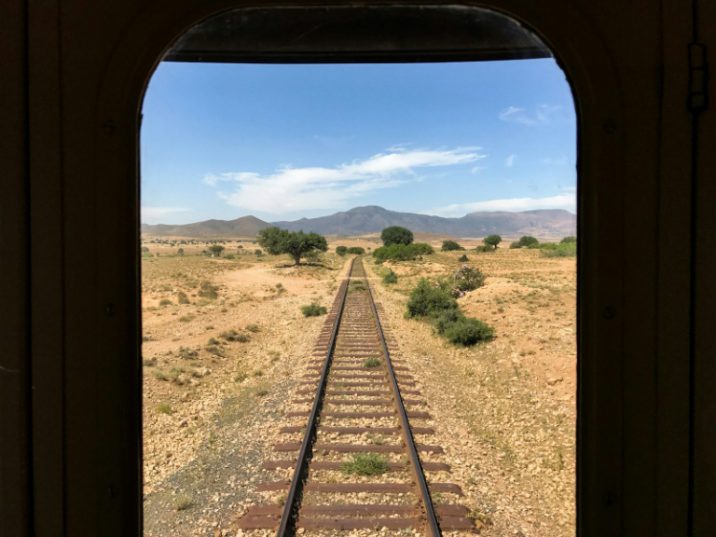Western Cape’s anti-gang unit makes dent in crime despite detective and vehicle shortage
Edouard Kunz knows timekeeping is important but the former Swiss watch precision mechanic admits that James Bond's Oriental Desert Express in remote eastern Morocco never runs on schedule.
The train, made famous in the 2015 Bond movie “Spectre”, trundles tourists between the town of Oujda and the former mining city of Bouarfa along a 350-kilometre-long (215-mile) stretch of desert.
“It takes between eight and 12 hours to make the trip, sometimes even more,” says Kunz, 70, who is known as Edi, blaming sandstorms for frequent delays.
His passion for trains put him in the driver’s seat more than 10 years ago when he persuaded Morocco’s National Office of Railways to let him run a tourist train on a disused railway line.
The track that runs near the border with Algeria was originally built nearly 100 years ago when Morocco was a French protectorate.
It was part of an ambitious project, the Mediterranean-Niger railway, to link the sea to inland Africa.
However, the project was short-lived and, in time, the mines and factories in Bouarfa shut down, until the desert region with its lunar landscapes was rediscovered by Kunz and the location scouts for “Spectre”.
Exterior shots of the train making its way through the desert darkness were used in the Bond movie, a star-studded spy thriller with Daniel Craig reprising the role of 007.
One of the most striking sequences in the film depicts a romantic dinner between Bond and a character played by French actress Lea Seydoux that is interrupted by the villain Mr Hinx, played by wrestler Dave Bautista.

The train, which featured in the 2015 James Bond movie “Spectre”, runs along a track built nearly 100 years ago
The resulting fight between Bond and Hinx in a train carriage has been praised by some critics as one of the best scenes in the whole movie.
– Cradle in the desert –
The tourist train that Kunz hires from Morocco’s national railway operator is not quite as luxurious as the one featured in “Spectre”.
Tourists can choose from a first-class, air-conditioned carriage and another that dates back to the 1960s, in which they can open the windows to take in the scenery and snap pictures.
The train moves at a top speed of 50 kilometres per hour (30 mph), but this can often drop to 10 kph and sometimes the train has to come to a complete halt because of sand on the tracks.
When that happens, workers resort to shovels to get rid of the sand before the train can proceed.
“Some people buy BMWs but I bought myself a train,” Kunz says, with a chuckle, recalling how he struggled to make a profit with his desert train project.
In a good year, he says, he makes five to six trips between Oujda and Bouarfa.
On the route to Bouarfa, the first dozen or so kilometres are through a fertile plain, and then the train passes through the Tiouli tunnel.
The train at times has to slow down, or even stop, due to sand on the tracks when workers resort to shovels
After that it is mostly desert.
Along the way, passengers see abandoned train stations — and the more unusual sight of a former Roman Catholic church turned into a judo club, near a mosque.
Kunz is hoping to transform one of the abandoned stations into a restaurant, but for the time being dinner is served in the train.
The chef, Aziz, prepares local specialities — spicy tajine stews and mint tea — for the tourists.
“This train is important. It creates jobs and helps promote our country,” Aziz says.
One of the passengers on the Oriental Desert Express is Mona, a young Moroccan based in Paris.
“It is a welcome change of scenery. It’s nothing but an infinite desert behind us and ahead of us,” she says.
“There’s an extraordinary atmosphere on the train,” she adds, comparing its slow progress through the Saharan sands to being rocked in a cradle.
Download our app